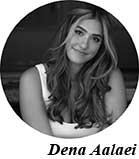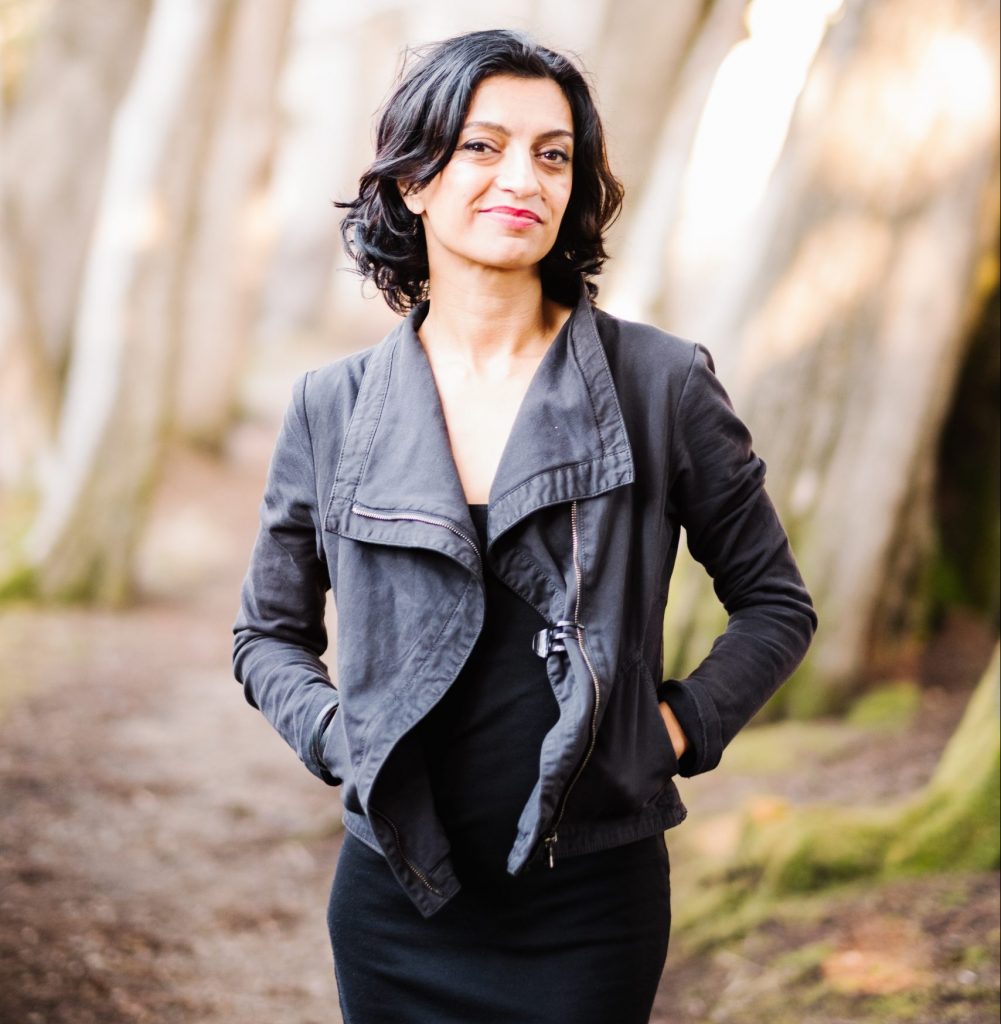Editor’s note: This story is part of KQED’s Youth Takeover. Throughout the week of April 24–28, we’re publishing content by high school students from all over the Bay Area.
 s an Iranian American teenager born and raised in California, my immigrant parents searched tirelessly for anything that would tie me back to their homeland: poetry, music, art, stories and clothing. I grew up reading Rumi, listening to Googoosh, and hearing Persian folktales. Iranian pride runs strong when it comes to art, especially in times of political turmoil, because art has a way of conveying emotions when strategy and politics fall short. Firuzeh Mahmoudi, executive director of United For Iran, couldn’t agree more.
s an Iranian American teenager born and raised in California, my immigrant parents searched tirelessly for anything that would tie me back to their homeland: poetry, music, art, stories and clothing. I grew up reading Rumi, listening to Googoosh, and hearing Persian folktales. Iranian pride runs strong when it comes to art, especially in times of political turmoil, because art has a way of conveying emotions when strategy and politics fall short. Firuzeh Mahmoudi, executive director of United For Iran, couldn’t agree more.
For Iranians, the intersection of art and protest is not a new concept, but for Mahmoudi, the combined power of both is more important than ever during the ongoing uprising for equality sparked by the September 2022 death of Mahsa Amini.
Previously, Mahmoudi was the international coordinator of a $13 million United Nations project working on best environmental health practices in the Global South. Now, with the Bay Area-based nonprofit United For Iran, she works to improve civil liberties in Iran. The organization creates technologies like apps and databases to share information and to empower Iranians, while also putting on events and leading international campaigns.
On March 26 Mahmoudi co-hosted “Voices of the Iranian Diaspora” at the Oakland Museum of California, an event which explored the role of art within the Women, Life, Freedom movement through artist talks, live music and poetry. I attended alone, in an effort to explore my Iranian roots separate from my parents’ inherent connection. The experience was overwhelmingly touching and deeply moving; I felt connected to the conflict and tied to the potential solution.
First to the podium was the poet Persis Karim, who shared her personal connections to the ongoing revolution and read a poem titled “Sheerzan” (lion women), referencing the women frontlining the revolution in Iran. A particular line from a poem named “Steal the Body” stuck with me: “The sour taste in her mouth of a realization that she will exhume a lie told over and over and over again.” The poem is about Nika Shakarami, a young girl killed by the Iranian security services whose body was stolen from her family prior to burial.
Next, artist Shaghayegh Cyrous spoke passionately about her visual, multimedia and social practice work, which addresses themes of immigration, separation from family and discrimination. She delved deep into her past projects, bringing the audience into her thoughts and feelings as an Iranian immigrant in the States. Finally, the event concluded with a beautiful musical performance from Mahsa Vahdat, who sang poems from Havez and had the audience accompany her in the last song about hope for Iran. Throughout, Mahmoudi acted as a voice of critical analysis, grounding the afternoon’s performances in the reality of life in Iran.
A few weeks later, I talked to Mahmoudi about her hopes for the revolution, the role of art in protest and what’s coming up next for United For Iran.
This interview has been edited for length and clarity.

Dena Aalei: So what does this revolution mean to you as an Iranian living in the States? What do you feel is your place in the revolution as an American citizen?
Firuzeh Mahmoudi: I find myself more as just a human living on the planet. I believe that we’re all very connected and we all support ourselves and each other in the work we do, and if one area of the world uplifts or spirals down, it affects all of us.
How I feel about this revolution in particular [is], although right now things are dark and very hard, I feel hopeful. I think this time it’s singular, this uprising is different. It’s woman-led, it’s youth-led. It’s extremely diverse, socio-economically, geographically [and with the] various movements that are involved. It’s also very intersectional. There were people on the street holding queer signs. There were people from all different ethnic minority groups. [It’s also] leaderless, which means everyone’s a leader and everyone’s backing each other and supporting each other and showing so many signs of love. And also the message is different. They’re demanding change — it’s not about reform — it’s about change. And there’s clarity in that.
Because it’s so progressive and not ideological, there’s this massive kind of globalness to the whole movement. If you focus too much on the destination and not the process, then you can’t guarantee a change. But if you have a very robust civil society and engaged citizens and they’re very clear about what they want and they’re unified in their voice… then when change comes, the chance of thriving and surviving and them not being fooled by a promise of a political leader is much higher. So that’s why I’m hopeful.
I think we all have a place in the revolution, whoever we are, because we want to see a better world. We want to see democracy and equality across the board for everyone. But as an Iranian American who was born in the U.S. but lived in Iran from a very young age, I feel like there’s a way for me to contribute to the Iran and the world that I want to see.
What do you think art means to the people of Iran, especially during revolutions and times of political crises, which Iran has seen many, many times? What do you think art brings to the table?
You want to be really strategic and thoughtful and constantly asking, “Is this bringing about change? Is it worth it?” But I do believe that people are moved to action and fall in love with an idea or get their passion from the arts. Art and emotions are very connected. It can be any version of art, it can be a poem, it can be as simple as a gesture. It can be a little dance someone does on the street that’s in defiance that matches the dance someone else did the day before they got arrested.
There’s so much trauma in the world and there’s so much trauma inside Iran. Our country, for 44 years, has been taken hostage essentially by a group of old men. There’s personal trauma as well, and of people not being able to put food on the table or having a family member killed or themselves being tortured. So how do you process all of this grief [on] the national level as well as a personal one? Art really helps.
So there’s that purpose to it, there’s that level of creating something that’s unified and connects us. And it’s also an act of resilience and defiance. We’re seeing it all over there with graffiti messages or the turban tossing. I also feel like [art is] a way for people to show love and celebrate because [the government] can win everything else except our emotions, of how we feel, how we choose to respond. Us being in that space is an act of defiance and it’s how it’s going to allow us to continue [in the] long haul to win, because we have to do this.
Has your organization United for Iran worked with art before, and what was that experience like? Did it have a certain effect or have you personally felt a connection with art in your life?
Everyone needs to be invited to the party: the artists, the researchers, the advocates, the lawyers who work inside and outside the country, the journalists. So we’ve done a bunch of work with artists. We did a mural project with Shaghayegh [Cyrous] in Clarion Alley in San Francisco that has our logo on it and seven political prisoners.
Six months into me starting United for Iran [in] December 2009, we did Arts United for Iran. We had 33 events, concerts, gallery showings, and there was an online component as well. People submitted ideas [for shows and art], so that was really wonderful. It included so many different artists. On March 8 this year, we sponsored a music video — that’s by Justina, an Iranian hip-hop artist, who lives in northern Europe.
The last project I want to share is called “Vote for Zahra.” It was four years after the uprising happened in 2009, which was Ahmadinejad’s fraudulent election results. Four years later, he’s running [in] another election. We wanted to run a campaign to talk about the elections, [and] highlight the fact that women can’t run for office. So we used art to connect reality with fiction. There’s a graphic novel called Zahra’s Paradise [which tells the story of a] mom whose son went missing during the 2009 uprising named Zahra. [She] runs in the name of her son for the office of the president — a free election for free Iran. We had little pictures of her responding to the world, to the various candidates and whatever they said. People were holding her picture in front of Gandhi’s picture in D.C. and the Nelson Mandela Museum in South Africa, all over the world. That was a really great campaign. And the government of Iran took note: the minister of intelligence wrote about it, and mentioned me as an anti-revolutionary fugitive.
Lastly, what’s coming up next for United for Iran, not just in terms of art, but in terms of events or ideas or campaigns?
Nearly all of our focus [is] inside Iran. We have four major projects that we’re doing currently, and all of them [are] constantly evolving. Iran Prison Atlas is relaunching its new website sometime mid-summer and that’s really exciting. We’ll have visualizations of the various patterns of abuse — we have data for 10 years now. The visualization will tell the story of what’s happening inside prisons and who’s being particularly targeted or persecuted, [which] prisons have most mistreatments, or which judges have the biggest violations.
We have an app that I mentioned at Oakland Art Museum talk as well, called Gershad, where you can report and detour the location of the morality police. And new versions of the app will be coming out within the year.

Firuzeh Mahmoudi and United for Iran will participate in “Iran Through Women’s Eyes,” an intimate salon to discuss the interaction of art, culture and politics with other members of the Iranian diaspora on Thursday, April 27 at the World Affairs Auditorium (312 Sutter St. Suite 200, San Francisco). Tickets and event details are here.
Dena Aalaei is an 18-year-old journalist and activist who attends Sacred Heart Preparatory in Atherton, California. As an Iranian American writer, she finds passion in exploring her identity through reporting and revealing truths in her community. Next fall she will be attending Boston University, majoring in media science with pre-law emphasis. When she isn’t reporting and writing, you can find her listening to music or painting canvases for her friends.

















